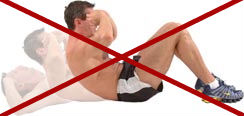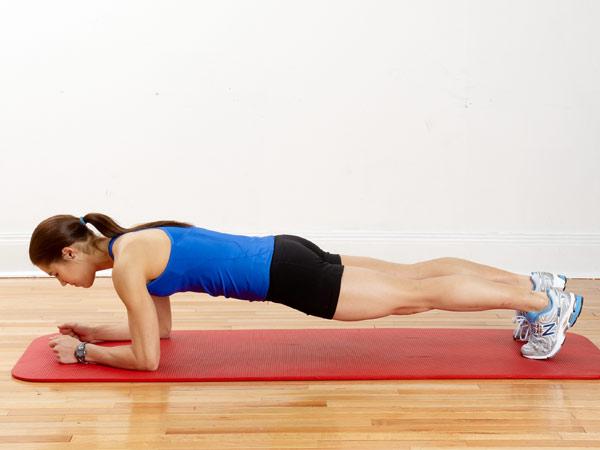 There are many uncertainties in healthcare, but this isn’t one of them: sit-ups are not good for your back.
There are many uncertainties in healthcare, but this isn’t one of them: sit-ups are not good for your back.
Understanding that sit-ups are bad for the lumbar spine is not a new development. Yet, for some reason, we still do them. I see it all the time in practice– leg and back pain triggered (or at least aggravated) directly by flexion dominant core routines that include the sit-up.
Why? I think sometimes it’s because if we can’t visualize why something is bad for us, it’s harder to stick to the habit. Blindly following a rule is tough, but understanding why the rule is there makes it much easier to abide by. Hopefully this article helps to give method to the no sit-up madness.
Disc damage and core work
First of all, if you’re a runner and you are attempting to compliment your training with a core routine, I commend you- this is a proven way to take a break from running and still work toward becoming a faster athlete (as I wrote about here).
So do core work; just don’t bend your spine! The sit-up is not the way to boost your running economy. My post today is inspired by this 2014 study published in Spine, which looks at the biomechanics of a disc herniation. Nothing ground breaking in this article, but they hit the nail on the head with what past researchers have also shown to cause a healthy disc to herniate:
“Disc wall failure in healthy motion segments requires both flexion and an elevated rate of compression. Damage is initiated in the mid-then-outer annual fibres, this is a likely consequence of the higher strain burden in these same fibres from endplate curvature.”
In layman’s terms, this means that leaning forward repetitively is what causes a disc herniation. The intervertebral discs are soft tissue structures separating the vertebrae that make up our spine. The outer layer of the disc is composed of tough connective tissue, and the centre is jelly-like (called the nucleus pulposus). The nucleus puplosus should always be in the middle of a healthy disc.
As the authors of the study note, disc wall failure happens with “flexion and an elevated rate of compression.” This sounds like a sit-up to me!
“Damage is initiated in the mid-then-outer fibres…” describes how the nucleus worms its way through the connective tissue layer with repetitive compressive and flexion loads (aka more sit-ups). Eventually, that nucleus can rupture all the way through and cause pain, or even put pressure on nerve roots, causing more pain.
 Why is this important for runners?
Why is this important for runners?
The first and most obvious reason why this is important for runners is because we need to stop doing sit-ups. No secret there.
The second reason why this is so important is because often in practice I see nerve root compression stemming from a disc herniation that can often mimic hamstring pain. A full-blown nerve compression is extremely painful in a way that is very distinct from muscle pain or tension. However, with low grade, early nerve compressions, a sensation that mimics muscle tension is extremely common.
I highly recommend you watch this video, which perfectly displays this hamstring-mimicking nerve pain in a runner.
Practical Applications
When working your core, don’t do sit-ups, or anything that loads the spine outside of its neutral position. Do planks, pelvic bridges or even squats (properly); just don’t bend your spine and you’ll likely be ok.
It is also important to keep in mind that just because you have gotten away with sit-ups for a long time, that doesn’t mean you will forever. The inner layers of the disc’s connective tissue have a poor nerve supply, thus you will not feel them as they break apart. It’s a silent ticking time bomb that will present in the form of dull low back and leg stiffness after a significant amount of damage has already taken place.
The final takeaway as a runner is this: before you stretch and rehab your injured hamstring, make sure it’s not the nerve! Misdiagnosed sciatic nerve issues taken as hamstring strains are something I see far too often. Treating a sciatic nerve irritation as a hamstring strain is a huge problem not only because it delays proper treatment, but often times the rehab required to address the hamstring will put the sciatic nerve into tension, making the condition much worse.
So every time you think about doing sit-ups, stop yourself. Not because somebody said so, but because you can now picture yourself squeezing that nucleus puplposus out through the connective tissue that surrounds it and onto the nerves that run down your legs!
Dr. Sean Delanghe, BSc. (Hons), DC is a chiropractor, coach, and a regular contributor to the RunWaterloo blog.

